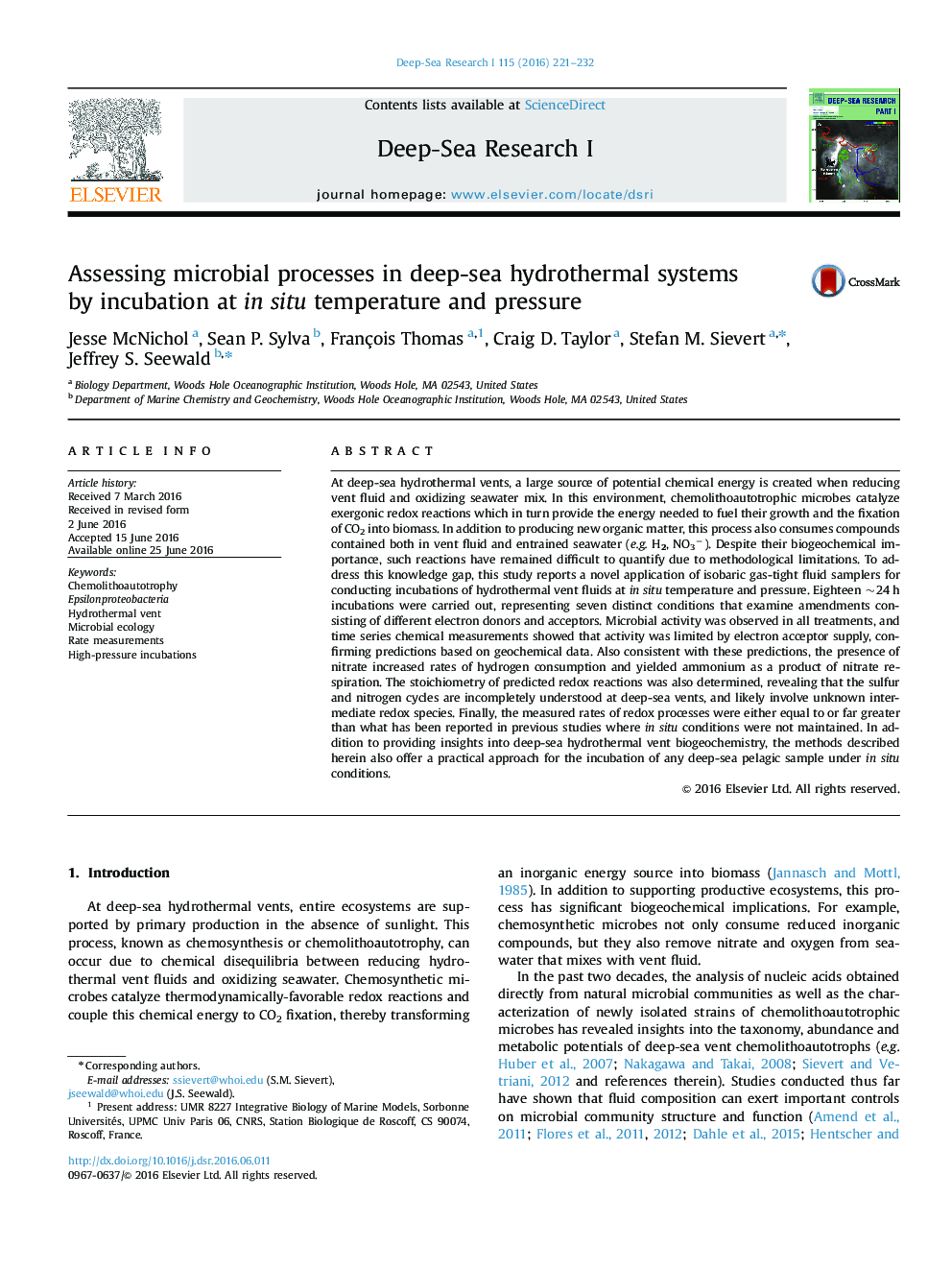| Article ID | Journal | Published Year | Pages | File Type |
|---|---|---|---|---|
| 4534423 | Deep Sea Research Part I: Oceanographic Research Papers | 2016 | 12 Pages |
•Hydrothermal vent fluids were incubated at seafloor pressure and temperature.•Results constrain rates and stoichiometry of microbial redox reactions.•Microbial communities were dominated by Epsilonproteobacteria.•Imbalanced redox stoichiometry suggests incomplete oxidation of sulfide.•Dissimilatory nitrate reduction to ammonium occurred mainly with hydrogen.
At deep-sea hydrothermal vents, a large source of potential chemical energy is created when reducing vent fluid and oxidizing seawater mix. In this environment, chemolithoautotrophic microbes catalyze exergonic redox reactions which in turn provide the energy needed to fuel their growth and the fixation of CO2 into biomass. In addition to producing new organic matter, this process also consumes compounds contained both in vent fluid and entrained seawater (e.g. H2, NO3−). Despite their biogeochemical importance, such reactions have remained difficult to quantify due to methodological limitations. To address this knowledge gap, this study reports a novel application of isobaric gas-tight fluid samplers for conducting incubations of hydrothermal vent fluids at in situ temperature and pressure. Eighteen ~24 h incubations were carried out, representing seven distinct conditions that examine amendments consisting of different electron donors and acceptors. Microbial activity was observed in all treatments, and time series chemical measurements showed that activity was limited by electron acceptor supply, confirming predictions based on geochemical data. Also consistent with these predictions, the presence of nitrate increased rates of hydrogen consumption and yielded ammonium as a product of nitrate respiration. The stoichiometry of predicted redox reactions was also determined, revealing that the sulfur and nitrogen cycles are incompletely understood at deep-sea vents, and likely involve unknown intermediate redox species. Finally, the measured rates of redox processes were either equal to or far greater than what has been reported in previous studies where in situ conditions were not maintained. In addition to providing insights into deep-sea hydrothermal vent biogeochemistry, the methods described herein also offer a practical approach for the incubation of any deep-sea pelagic sample under in situ conditions.
Graphical abstractFigure optionsDownload full-size imageDownload as PowerPoint slide
